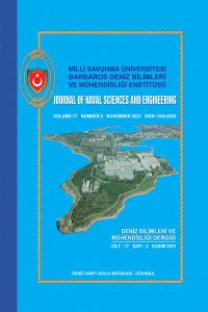An Integrated FAHP-FGP Approach for Route Selection in a Disrupted Transport Network
An efficient, effective and sustainable freight transport network is a crucial determinant for economic growth and development. This network needs to be structured as resilient as practicable and also quickly adoptable and adaptable to meet the needs of transport users and provide alternative optimal routes, if it is affected by disruptive events. This paper presents a route selection model which supports transport planners to decide rapidly on an optimal transport route in case of disruption in a multimodal freight transport network. An integrated method based on Fuzzy Analytic Hierarchy Process and Fuzzy Goal Programming is developed to support the decision of route selection.
Keywords:
Multimodal Transport, FAHP, FGP, Disruption Decision Support,
___
- [1] SteadieSeifi, M., Dellaert, N., Nuijten, W., Van Woensel, T., and Raoufi, R. (2014). “Multimodal Freight Transportation Planning: A Literature Review”. European Journal of Operational Research, vol. 233, no.1, pp.1-15.
- [2] Cao, C., Gao, Z., and Li, K. (2012). “Capacity Allocation Problem with Random Demands for the Rail Container Carrier”. European Journal of Operational Research, vol.217, pp.214–221.
- [3] Kayikci, Y., and Catay, B. (2017). Revenue-based slot allocation and pricing framework for multimodal transport networks. Paper presented at the 22nd International Symposium on Logistics (ISL2017), Ljubljana, Slovenia.
- [4] Murray-Tuite, P.M., and Mahmassani, H.S. (2004). “Methodology for the Determination of Vulnerable Links in a Transportation Network”. Transportation Research Record, vol.1882, pp.88-96.
- [5] Faturechi, R., and Miller-Hooks, E. (2014). “Travel Time Resilience of Roadway Networks under Disaster”. Transportation Research Part B, vol.70, pp.47-64.
- [6] UBAK. (2014). “Türkiye Kombine Taşımacılık Strateji Belgesi”, UDH, Ankara. Retrieved from http://www.ubak.gov.tr/ BLSM_WIYS/TMKDG/tr/ doc/20150106_122025_64574_1_ 64896. pdf (Access Date: 12.11.2018).
- [7] Harris, I., Wang, Y., and Wang, H. (2015). “ICT in Multimodal Transport and Technological Trends: Unleashing Potential for the Future”, International Journal of Production Economics, vol.159, pp.88-103.
- [8] Woxenius, J. (2007). “Generic Framework For Transport Network Designs: Applications And Treatment In Intermodal Freight Transport Literature”, Transport Reviews, vol.27, pp.733-749.
- [9] Macharis, C., and Bontekoning, Y.M. (2004). “Opportunities for OR in Intermodal Freight Transport Research: A Review”. European Journal of Operational Research, vol.153, no.2, pp. 400-416.
- [10] Crainic, T.G., and Rousseau, J.M. (1986). “Multicommodity, Multimode Freight Transportation: A General Modeling and Algorithmic Framework for the Service Network Design Problem”. Transportation Research B: Methodology, vol.208, pp.225–242.
- [11] Saaty, T. (1980). The Analytic Hierarchy Process. New York:McGraw-Hill.
- [12] Chang, D.Y. (1996). “Applications of the Extent Analysis Method on FAHP”. European Journal of Operational Research, vol.95, no.3, pp.649-655.
- [13] Narasimhan, R. (1980). “Goal Programming in a Fuzzy Environment”. Decision Sciences, vol.11, no.2, pp.325-336.
- [14] Zimmermann, H.J. (1978). “Fuzzy Programming and Linear Programming with Several Objective Functions”. Fuzzy Sets and Systems, vol.1, no.1, pp.45–55.
- ISSN: 1304-2025
- Yayın Aralığı: Yılda 2 Sayı
- Başlangıç: 2003
- Yayıncı: Milli Savunma Üniversitesi Deniz Harp Okulu Dekanlığı
